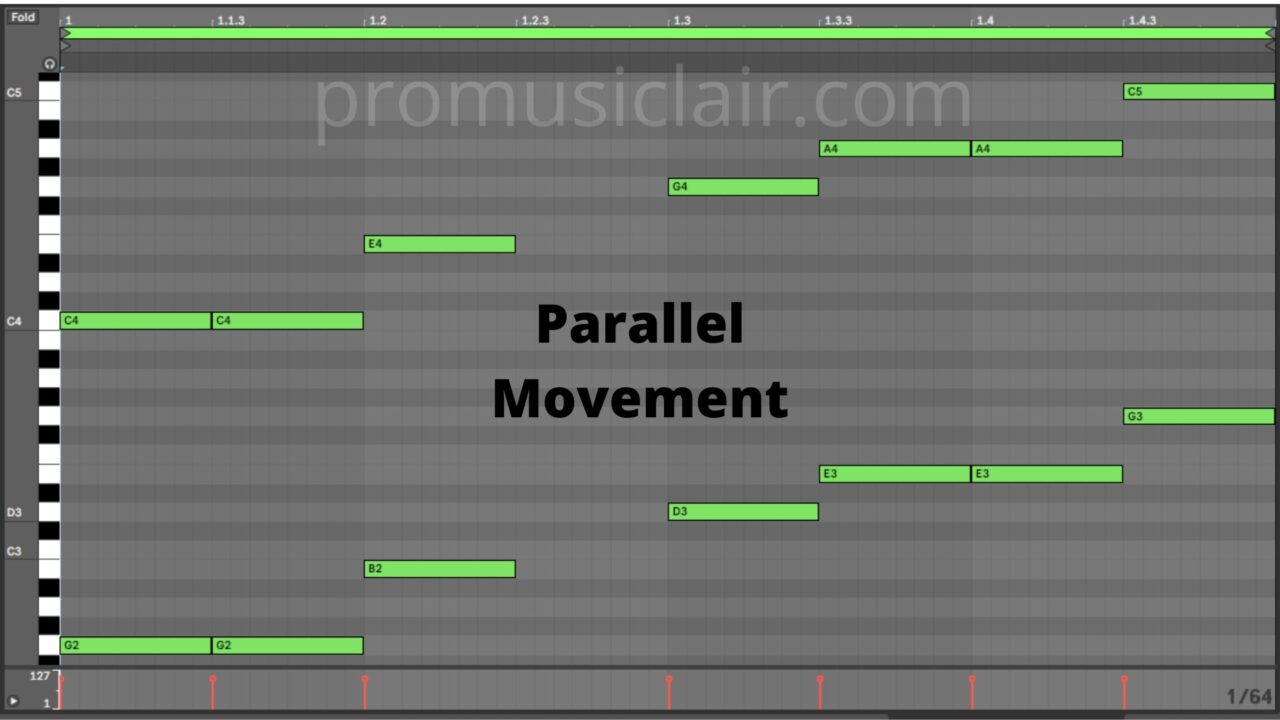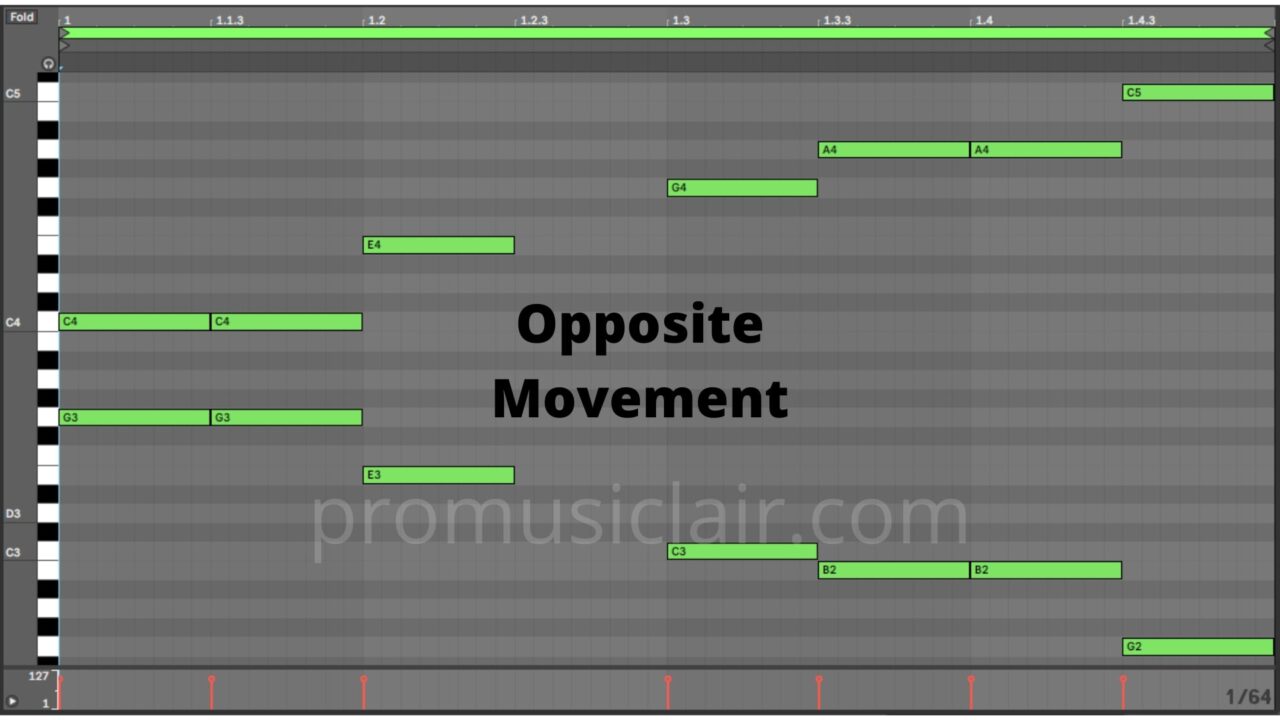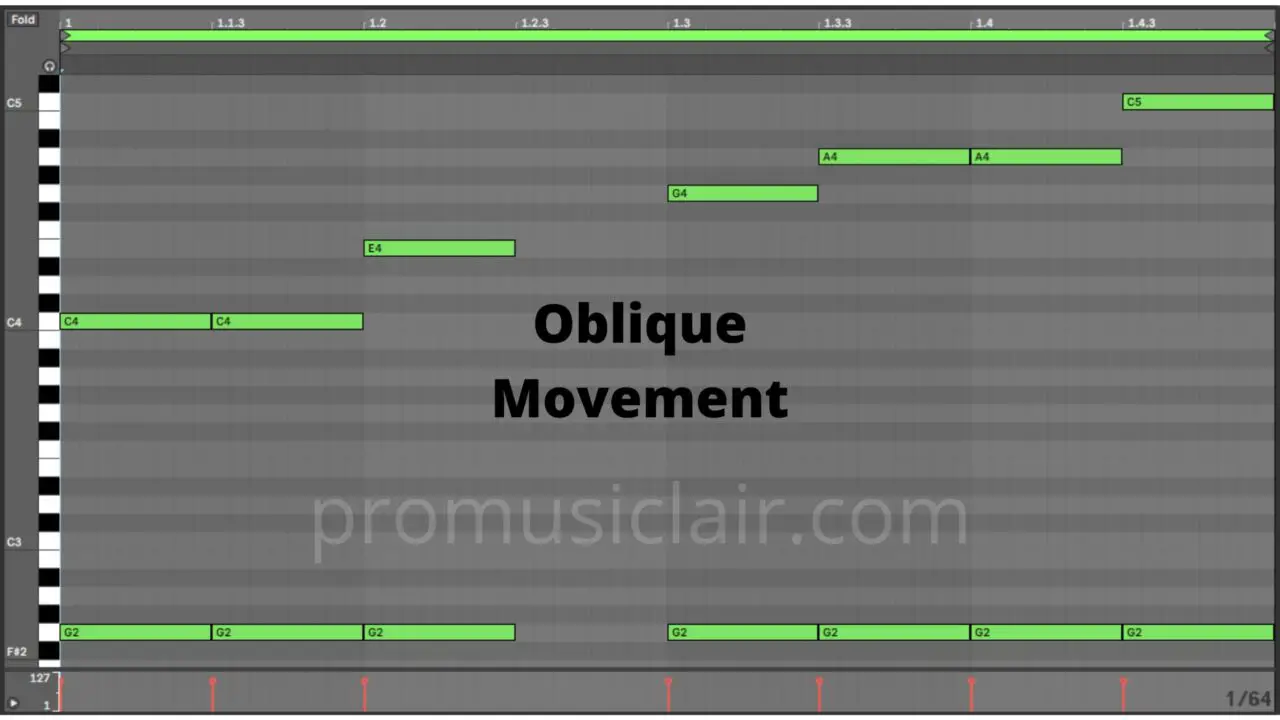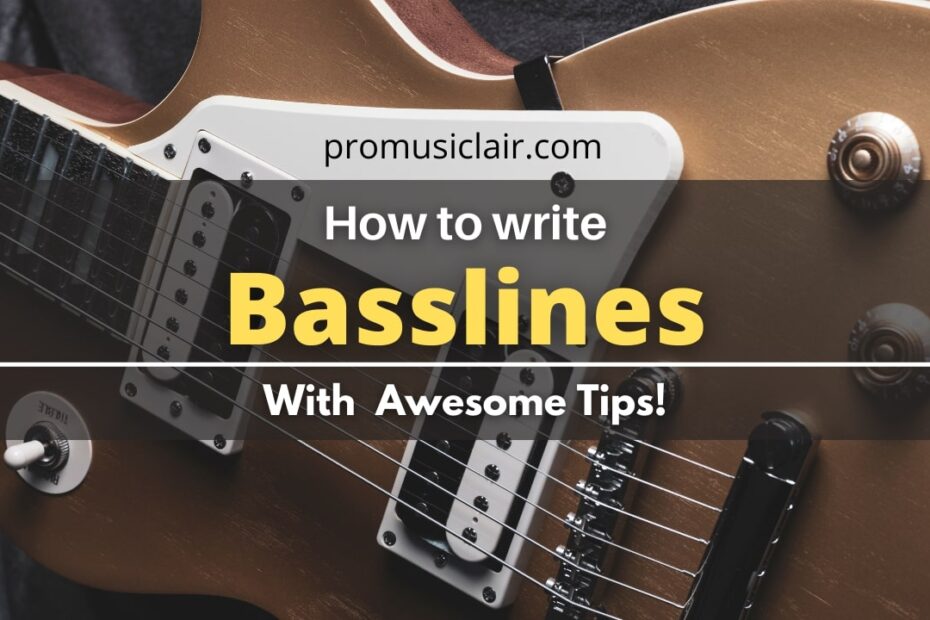Contents
How to write basslines
We love bass! There are so many songs that are very dear to me only because of their basslines! I can guarantee many of you also have such favorites.
In your quest of writing better basslines, I have written this article to explain you all the best techniques that I personally use and have seen many producers implementing them too and getting great results always!
First we’ll see the steps for writing bassline then some tips to make them better always..
Steps to write a bassline
The steps to write basslines can be different for different people but I’ll show you mine, that’s beginner friendly.. but note that this is not the only way in which I make them.. these steps are just for the beginners.
Keep reading for advance tricks..
Lets suppose a regular 4 on floor beat (EDM). Suppose each chord is 1 bar long and the chord progression has four chords. So obviously it is a four bars phrase.
These are the steps to write a bassline –
- Check the chords of your song.
- Play the beat if you have one or start the metronome.
- Take only the root note (the lower most note) of the chord on your bass and record whatever feels good with that beat. Make a simple rhythmic pattern. Follow your intuition.
- Do this for all the chords. Basically write the bass under the chord progression with only the root notes of the chords.
- Now take a few bass notes under the first chord and change their notes. Transpose them up or down a few semitones to create little melodic motif.
- Repeat this motif under every chord. Remember to not repeat the exact notes but the pattern.
- Change the pattern slightly in the last bar so that the listener may not get bored.
- There you have it! A simple bassline!
This was the most simplest approach for a beginner bassline creation.
Now once you have known the basic approach, understanding the advance ways will become a lot easier for you.
To be better at writing basslines takes a little understanding of some important aspects related to music production.
Let’s take a detailed look..
Before we start, let me introduce you to our –
Make sure to check it out.
What genre are you writing in
Surely there are no rules in any art form, not to mention music.
Still knowing a few rules will make you more creative.
If you know about how the basslines of different genres work, may be you can benefit from it into any other genre by fusing and what not.
Different genres have different styles of basslines.
Its not hard to distinguish between a trap bass and a rock bass.
Trap music has huge subby 808s that shake the floors! Rock bass has a melodic characteristic that is very warm and soothing.
The bass pattern of both these genres are no similar.
Rock bass is more rhythmic and slappier, whereas trap 808s are more prolonged and use different intervals that are more characteristic of the genre.
These heavy 808s portray power and weight that gives a unique powerful feel to the genre.
Rock bass on the other hand has focus mainly on the melodious quality in the song.
EDM bass is also different in its features. Jazz has one of its own bass style!
Understanding different genres will help you internalize different characteristics of the basslines that will develop your bass writing vocabulary to use in your music.
Its best for expanding the knowledge about different bass patterns that different genres make use of.
Understand the rhythm
By rhythm what I mean is the beat.
When you have a sense of the movement that is going on in your music, the bass just naturally flows in.
The beat or the drums lay the foundation of the song.
Bass fills up the space that the drums lack or it enhances the already laid down rhythmic foundation.
It adds interest to the drums by creating interesting rhythmic phrases.
The bass can be right on the beat or it can have syncopation.
Syncopated bass
In the music, there are strong beats and weak beats.
When you start a four on floor metronome, every individual click represents the strong beat.
The space between any two consecutive metronome clicks is the region where placing the note will turn the rhythm into a syncopated rhythm.
So usually when you record the bass with the metronome “on”, pressing a note on your keyboard between every two consecutive clicks will record a syncopated bass.
Syncopation is a sure way to add more interest in your track. It adds a good push and pull feel to the rhythm of your song.
This subconsciously excites the listener and honestly, it feels really better than plain and boring right on the beat rhythm.
More on this – Syncopation
Understand the melody
In its core, bassline is an individual melody in the lowest register of the song.
It makes sense that the relationship of a bassline with the melody of the song will determine how pleasing or interesting the song sounds.
As far as the classical composers used to compose their songs, they incorporated many techniques of musical development.
One of which was the use of counter melody.
A bass is also a counter melody. It is as prominent as the main melody of the song.
Try removing it and you will know how much you are missing it!
There are different ways with which you can achieve the bass melody borrowing from your main melody’s movement.
Parallel movement
In this method, the bassline of your song mirrors the movement of your main melody.
The bass notes can be exactly same or they can be fifth above.
If your melody is C, C, E, G, A, A, C, you bassline will be exactly the same or the fifth above these notes.
The bass notes a fifth above will be – G, G, B, D, E, E, G.

Parallel Melody Movement
Similar movement
In this movement, the bass moves in the similar direction to the main melody.
The only difference is of the intervals. The bass may have different interval changes between the consecutive notes unlike in the parallel movement.

Similar Melody Movement
This movement does keep the feel of the parallel movement but at the same time adds variety and interest to it.
Opposite movement
If the movement of the main melody moves in an inclined manner, the bass simply moves in an exact declining manner.
In the melodic example above, if the main melody moves from C to D upward, the bass moves from G to F downward, so on and so forth.

Opposite Melody Movement
This method creates an interesting contrast between the bass and the main melody.
Oblique movement
In the oblique movement, any one of the two melodies, which are the bass and the main melody, stays with no movement.
That stationary melody stays on the same note. It only moves forward in a rhythmic way.

Oblique melody movement
This gives the feeling of tension to the melody.
More on this – Contrapuntal motion
So these are the methods which can work as cheats to create interesting basslines.
I pretty much always use these techniques in my production.
The results take less time and are interesting and cohesive at the same time.
How you start a song
There are many ways to start a song.
Every producer likes to start a song differently.
Whatever approach works best, use it.
Some start with lyrics, some start with the main melody, some start with the chord progression, some start with the drums, some even begin with a hi hat groove and so on..
Whatever the song started with, the rest of the elements will have to be built around that one element and without a doubt, this impacts your end result!
This one element is in the spotlight of the whole song.
If you start with the bassline first, chances are that your bassline will be the best, provided that you also follow the other guidelines of this article.
When you try to find that first element while writing music, you put all the focus and effort into perfecting it therefore it comes out to be the best in your song.
The whole record revolves around it!
That’s the beauty of working this way!
Start with a sexy bassline and your listeners will love your music for the bass!
Chords
The primary function of the bass was to support the chord in the olden times.
The chords create the emotions and the feelings in any music, the bass supports it.
Even if you don’t use other techniques and simply use the root notes of the chord to write your bassline, your music will come out just fine.
I am not saying the best, but it will do just fine.
So chords are the guides to pick notes of the bassline.
You must in every way, keep the chord progression in awareness while writing bassline.
If you write the bassline first, write chord progression that goes along with the bass notes unless you are trying to be creative.
The notes of your bassline
As your bass is the melody in itself and has the same prominence as the main melody, the notes matter!
Since one of the functions of the bass is to support the chord progression, ideally, the notes of the bass have to be from the notes of the chord it is under.
The notes you select in the bass will have different mood and feel attached to it.
If the bass has simply the root note of the chord, that will be the most cohesive bassline.
Yet it is boring and a little cliché.
When you use the chord’s third note for instance, it will have a different feel, a bit interesting and will emphasize the emotion of the chord very much!
The fifth is also a good note for the bass. It gives powerful and confident feel to it.
The best approach is to experiment and see what emotions you like.
Afterall you know what you are after and you know the emotions you are trying to bring into your song.
The point of this section is to make you realize how important the note selection for the bass is.
Now you will be more aware while making the choices!
Change Octaves
A good way to generate interest in your bassline is to change the octaves of its one or a few individual notes.
The funk and disco genres have been using it a lot. Trap music utilize this technique too!
The bass when jumps from the lower to higher octave, gives a fresh feel to it.
Similarly, if the bass goes from upper octave to its lower one, also makes it more interesting.
This technique can also be used in different sections of the song. It will give the song a good contrast.
Just make the whole bass of the section an octave higher in the chorus if its lower in the verse or vice versa.
This technique when used only in the bridge or pre-chorus section will give it a unique touch! Be creative with it!
Turn the tables
Since I have told you that producers have their own way of approaching or starting their song, their results may be similar many times.
Turning the table in this context means that you should change the approach of starting a song.
If you always start with a melody, start with the bass riff now, if you start with the chord progression start with the melody.
If you are comfortable writing the lyrics first and then write the music, may be start with the music first.
Changing how you start your music will make you look at your song from a different angle. It will spark creativity and will make yoh think in a way that you may have not before!
I always switch between my approaches and this actually gives me new ways in which my song can develop.
This will affect what your bass will come out to be. Your bassline will benefit from this way of switching the approach.
Challenge yourself
Let me tell you a secret to work faster and much more effectively!
Just give yourself a challenge to accomplish a certain task within a small time frame.
This will put your mind in a stress and it will then find quick and effective ways to do the task with full focus.
Just give it a try!
Challenge yourself, set a timer and come up with a bassline whatsoever. Don’t judge yourself but just try to come up with one.
I am guaranteeing you that you will be amazed how cool bassline you will have created!
You can challenge yourself for each element of your song, be it melody, chords or whatever.
This is the best way to work everytime you sit for production. It saves you so much time and makes you get your ideas down which can be refined later.
The ideas are very important do remember this.
You can also set a timer and try to come up with several bass riffs and then select the best one out of it!
Set a timer of ten minutes and come up with five bass riffs. Select the best one that you like. You will be amazed!
Here’s one secret
You applying all the tricks and techniques are all okay but sometimes our brains saturate and just don’t want to get to work.
Music production involves so many things. It is a bunch of responsibilities and not just a single task.
Getting under such responsibilities do affect our productivity. We lose focus or feel drained.
It happens with everyone and it even happens with the best of us.
To get rid of this, I can give another secret.
To come up with an idea, get out of the producer seat and start humming the bass riff.
Just beat box or hum, or do the da da da or la la la.. whatever suits you.
Hum the bass over your music. Or go outside take a break and hum the bass outside.
Record it on your phone!
Humming the tune works the best in every way!
If I were to give you the one and only advice to write better music, it would be “using your mouth”!
This process involves the fun element into your work. When we hum, we subconsciously get immersed into the music.
Our bodies get involved in the music and that’s how the whole mind and the body gets synchronized and the best result is produced!
So even if you are not getting any good results with the other techniques, just start humming!
Play the track, the chords or the melody and start humming the bass riff over it!
Conclusion
In this article I have explained all the little and big tricks and techniques that you can incorporate now in your basslines to make them awesome all the time!
You can pick your favorite or use each one of these, the results will surprise you!
Along with these, always try to come up with your own techniques so that you will learn yourself more and what connects with you better.
